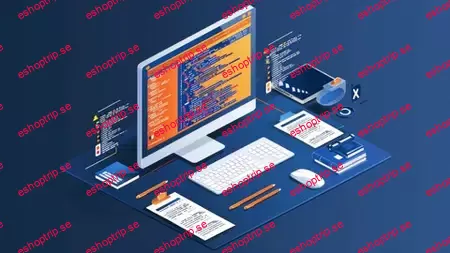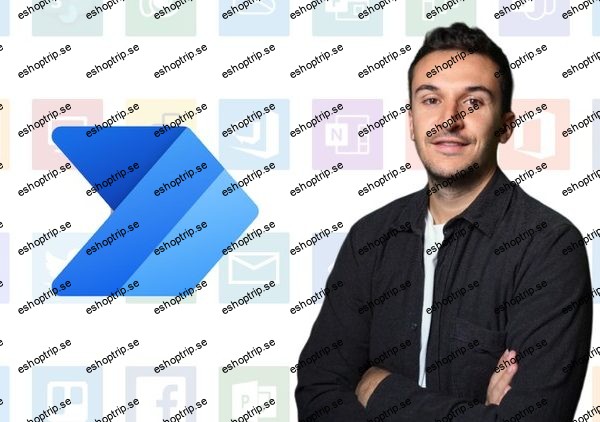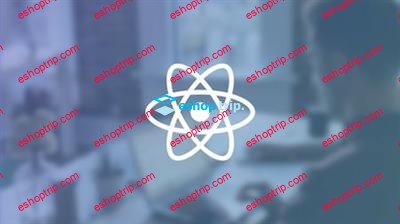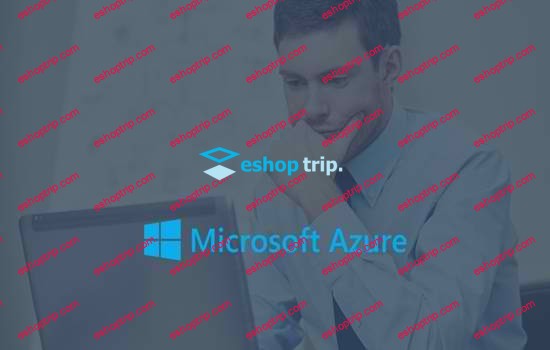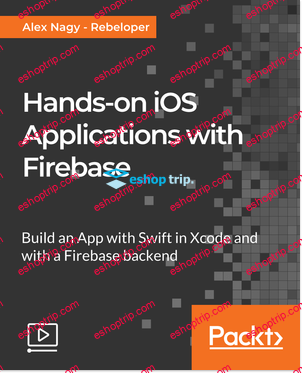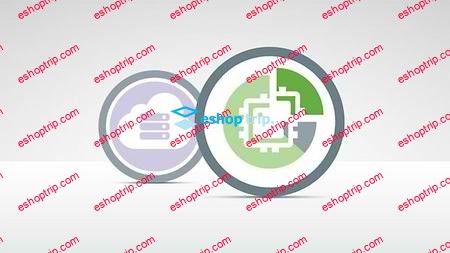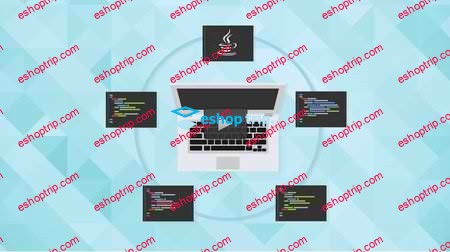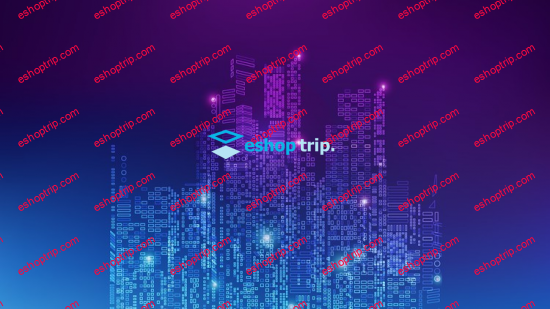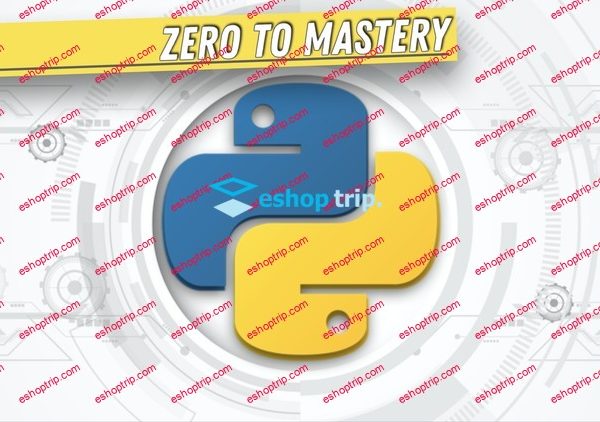Published 11/2024
MP4 | Video: h264, 1920×1080 | Audio: AAC, 44.1 KHz
Language: English | Size: 5.29 GB | Duration: 10h 12m
Master Chef automation from fundamentals to advanced projects, and streamline your DevOps journey with hands-on projects
What you’ll learn
Understand the core concepts of Chef, including workstations, nodes, and servers.
Install and configure Chef for both on-premises and cloud environments.
Develop and deploy cookbooks and recipes to automate infrastructure tasks.
Manage AWS cloud resources using Chef for scalable infrastructure.
Configure multi-node environments and automate server connections.
Automate virtual machine setups and manage cloud repositories.
Implement advanced Chef functionalities, such as custom attributes and dynamic MOTD automation.
Requirements
Basic understanding of system administration and IT infrastructure.
Familiarity with command-line interfaces and basic scripting (Bash, Ruby).
Prior experience with cloud platforms (AWS, Azure) is helpful but not required.
A laptop/PC with internet connectivity to install Chef and related tools.
Description
Introduction:In today’s rapidly evolving IT landscape, automation is key to efficient infrastructure management. Chef, a powerful configuration management tool, empowers DevOps engineers and IT professionals to automate infrastructure, simplify deployment processes, and ensure consistent configurations across servers. This course, “Chef Mastery: Automate Your Infrastructure with Real-World Projects,” is designed to take you from the basics of Chef to advanced automation techniques through hands-on projects. By the end of this course, you will have the skills to set up, deploy, and manage complex infrastructures using Chef.Section 1: Chef Fundamentals and EssentialsIn this section, we start with the basics of Chef, setting the foundation for your automation journey. You’ll learn what Chef is and its core components, like the Chef server, workstations, and nodes. We’ll guide you through installing Chef on your workstation, setting up the Chef server, and understanding the structure of a Chef environment. Key concepts like cookbooks, recipes, and resources are covered in detail, alongside an introduction to Rogi, a programming language used in Chef scripting. By the end of this section, you’ll be proficient in using Chef’s development environment and executing automation scripts.Section 2: Building Projects with Chef – Online Platform AutomationNow that you have a solid understanding of Chef basics, we dive into a real-world project: automating the setup of an online college registration platform. This section focuses on using Chef to manage AWS nodes, set up cloud connections, and automate database and web server configurations. You’ll use ChefDK, Visual Studio Code, and Ruby coding principles to deploy and manage cloud-based resources. By the end of this project, you’ll have hands-on experience in creating scalable cloud-based infrastructure using Chef.Section 3: Advanced Chef Project – Multi-Node and Server AutomationBuilding on the skills learned, this section explores the complexities of managing connections and configurations in multi-node environments. You’ll learn to configure workstations and cloud servers, set up multiple nodes, and deploy Chef recipes across different servers. We’ll cover bootstrapping, editing recipes, and automating Python installations using Chef. This section is ideal for those looking to scale their automation skills to enterprise-level infrastructures.Section 4: Virtual Machine Automation and ConfigurationThe final section of this course focuses on automating the setup and management of virtual machines. We’ll walk you through creating a project roadmap, setting up virtual machines on AWS, and establishing secure SSH connections between nodes. You’ll explore Chef-client configurations, centralized server setups, and cloud-centric repositories. Special attention is given to deploying recipes on web servers like Nginx, using dynamic attributes, and integrating automation scripts to manage virtual machine configurations seamlessly. This section concludes with an advanced project on automating MOTD (Message of the Day) and user-defined attributes for robust server management.Conclusion:By the end of this comprehensive Chef Mastery course, you will have gained the knowledge and confidence to automate and manage IT infrastructure like a professional. Whether you’re setting up a single server or managing a fleet of nodes in a cloud environment, you’ll be equipped with practical skills to streamline your DevOps processes and boost your career in IT automation.
Overview
Section 1: Chef Fundamentals and Essentials
Lecture 1 Introduction to Chef
Lecture 2 Components of Workstation
Lecture 3 Types of Nodes
Lecture 4 Structure of Chef
Lecture 5 Installation of Chef Server
Lecture 6 Coding for Chef Server
Lecture 7 Creating New User
Lecture 8 Installation of Workstation
Lecture 9 Setup of Chef Development
Lecture 10 Coding for Workstation
Lecture 11 Setting Client Nodes
Lecture 12 Cookbooks in Chef
Lecture 13 Executing the Codes
Lecture 14 Basics of Rogi Programming Language
Lecture 15 Famous Keywords in Rogi
Lecture 16 Learning the Classes and Objects
Lecture 17 Implementing the Conditional Statement
Lecture 18 Implementing the Case Statements
Lecture 19 How to Create a Cookbook
Lecture 20 Executing the Sudo Chef Client
Lecture 21 More Types of Resources
Section 2: Building Projects with Chef – Online Platform Automation
Lecture 22 Introduction to Project
Lecture 23 AWS Nodes Connections for Chef
Lecture 24 AWS Nodes Connections for Chef Continue
Lecture 25 Visual Studio Code for Chef
Lecture 26 Setting Chefdk on Chef-Workstation
Lecture 27 Resources and Ruby Coding Principles
Lecture 28 Deploying Recipes on Local Mode
Lecture 29 Deploying Recipes on Local Mode Continue
Lecture 30 Creating Cookbook
Lecture 31 Running in Chef-Solo
Lecture 32 Configuring Cloud Based
Lecture 33 Configuring Cloud Based Continue
Lecture 34 Bootstrapping Chef Node
Lecture 35 Installing MYSQL Server
Lecture 36 Centralized Chef Server
Lecture 37 Setting up Databases
Lecture 38 Configuring WebServer
Lecture 39 Configuring WebServer Continue
Lecture 40 More on Configuring WebServer
Lecture 41 Deploying Registration
Lecture 42 Top of Apache
Section 3: Advanced Chef Project – Multi-Node and Server Automation
Lecture 43 Introduction to Project
Lecture 44 Configuring Workstation
Lecture 45 Configuring Server on Cloud
Lecture 46 Configuring Server on Cloud Continue
Lecture 47 Configuring Node with Server
Lecture 48 Editing Receipes on Server
Lecture 49 Adding Multiple Nodes
Lecture 50 Instally Python 2 Through Chef
Section 4: Virtual Machine Automation and Configuration
Lecture 51 Introduction to Project
Lecture 52 Case Study
Lecture 53 Creating Project Road-Map
Lecture 54 Creating Project Road-Map Continue
Lecture 55 Creating Virtual Machines Through AWS
Lecture 56 SSH Connection Between Nodes
Lecture 57 SSH Connection Between Nodes Continue
Lecture 58 Chef-Client
Lecture 59 Installing Chef-Client to Workstation
Lecture 60 Standalone Chef Machine
Lecture 61 Standalone Chef Machine Continue
Lecture 62 Running Cookbooks
Lecture 63 Running Cookbooks Continue
Lecture 64 Creating Cloud
Lecture 65 Centric Chef Repo
Lecture 66 Sync Between Centralized Server
Lecture 67 Client
Lecture 68 Ohai
Lecture 69 Node Object
Lecture 70 Automating MOTD Dynamically
Lecture 71 Automating MOTD Dynamically Continue
Lecture 72 Implementing User
Lecture 73 Defined Attributes
Lecture 74 Deploying Recipe on Nginx
DevOps Engineers looking to enhance their automation skills.,System Administrators interested in automating infrastructure management.,Cloud Engineers who want to integrate Chef into their cloud deployments.,IT Professionals and Developers seeking to learn infrastructure as code.,Students and Beginners aiming to break into the field of DevOps and IT automation.
https://anonymz.com/?https://www.udemy.com/course/chef-software-learning-path-master-chef-automation/

